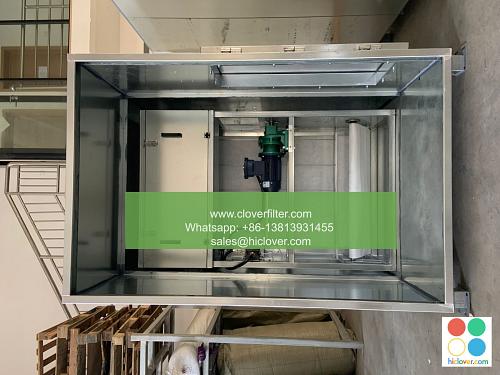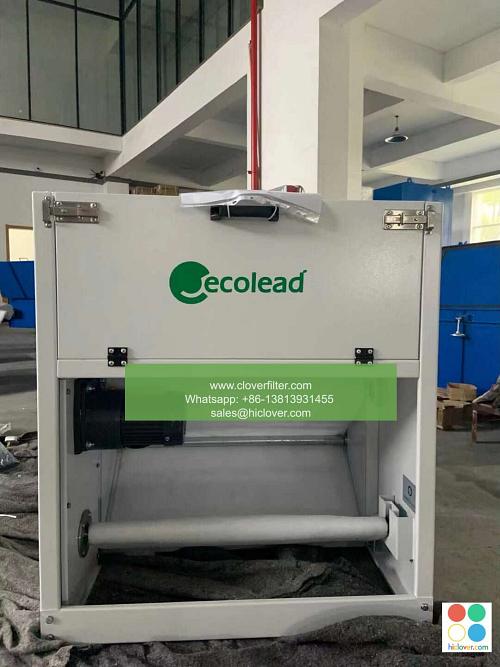Breathe Easy with the Power of Air Filters: Real-World Examples and Tips

Air pollution is a serious issue that affects millions of people worldwide, causing respiratory problems, cardiovascular disease, and even cancer. However, there is a simple and effective solution to improve indoor air quality: air filters. In this article, we will explore the benefits of air filters, discuss real-world examples, and provide tips on how to choose the right air filter for your needs.
What are Air Filters and How Do They Work?
Air filters are devices that remove pollutants and contaminants from the air, improving indoor air quality and reducing the risk of health problems. They work by using a combination of physical and chemical processes to capture particles, gases, and other pollutants, such as dust, pollen, mold, and volatile organic compounds (VOCs). Air filters can be installed in heating, ventilation, and air conditioning (HVAC) systems, or used as standalone units.
Real-World Examples of Air Filters in Action
Air filters are used in a variety of settings, including homes, offices, hospitals, and industrial facilities. Here are a few examples:
- Home Air Purification: Air filters can be used to remove allergens, such as dust and pollen, from the air, making it easier for people with respiratory problems to breathe. For example, a family with a child who has asthma can use an air filter to remove triggers from the air, reducing the risk of asthma attacks.
- Office Air Quality: Air filters can be used to remove VOCs and other pollutants from the air in offices, improving worker productivity and reducing sick leave. For example, a company can install air filters in their office building to remove pollutants from the air, improving the overall health and well-being of their employees.
- Hospital Air Filtration: Air filters are used in hospitals to remove bacteria, viruses, and other pathogens from the air, reducing the risk of infection and improving patient outcomes. For example, a hospital can use air filters to remove airborne pathogens from the air in patient rooms, reducing the risk of hospital-acquired infections.
- Industrial Air Filtration: Air filters are used in industrial settings to remove pollutants and contaminants from the air, improving worker safety and reducing the risk of environmental pollution. For example, a manufacturing facility can use air filters to remove dust and other pollutants from the air, reducing the risk of worker respiratory problems.
- Look for the MERV Rating: The Minimum Efficiency Reporting Value (MERV) rating is a measure of an air filter’s ability to remove particles from the air. Look for air filters with a high MERV rating, such as MERV 11 or higher, for optimal performance.
- Consider the Type of Pollutants: Different air filters are designed to remove different types of pollutants. For example, if you need to remove VOCs, look for an air filter with activated carbon.
- Check the CADR: The Clean Air Delivery Rate (CADR) is a measure of an air filter’s ability to remove pollutants from the air. Look for air filters with a high CADR, such as 300 or higher, for optimal performance.
- Maintain Your Air Filter: Regular maintenance is essential to ensure your air filter is working effectively. Make sure to replace your air filter regularly, according to the manufacturer’s instructions.
- Residential Air Filtration: Air filters can be used to improve indoor air quality in homes, reducing the risk of respiratory problems and improving overall health and well-being.
- Commercial Air Filtration: Air filters can be used to improve indoor air quality in offices, hospitals, and other commercial settings, improving worker productivity and reducing sick leave.
- Industrial Air Filtration: Air filters can be used to remove pollutants and contaminants from the air in industrial settings, improving worker safety and reducing the risk of environmental pollution.
- Medical Air Filtration: Air filters can be used to remove bacteria, viruses, and other pathogens from the air in hospitals and other medical settings, reducing the risk of infection and improving patient outcomes.
Tips for Choosing the Right Air Filter
With so many air filters on the market, it can be difficult to choose the right one for your needs. Here are a few tips to consider:
Conclusion
Air filters are a simple and effective solution to improve indoor air quality, reducing the risk of health problems and improving overall well-being. By understanding how air filters work, exploring real-world examples, and following tips for choosing the right air filter, you can breathe easy and enjoy the benefits of clean air. Whether you’re looking to improve the air quality in your home, office, or industrial facility, there is an air filter solution that can meet your needs. So why wait? Start breathing easy with the power of air filters today.
Highlighting Various Application Areas
Air filters have a wide range of applications, including:
By highlighting these various application areas, it’s clear that air filters are a versatile and essential tool for improving indoor air quality and reducing the risk of health problems. Whether you’re looking to improve the air quality in your home, office, or industrial facility, there is an air filter solution that can meet your needs.
It seems like you haven’t provided a specific question or topic for me to address. Could you please provide more context or clarify what you would like to know or discuss? I’m here to help with any questions or topics you’d like to explore.


